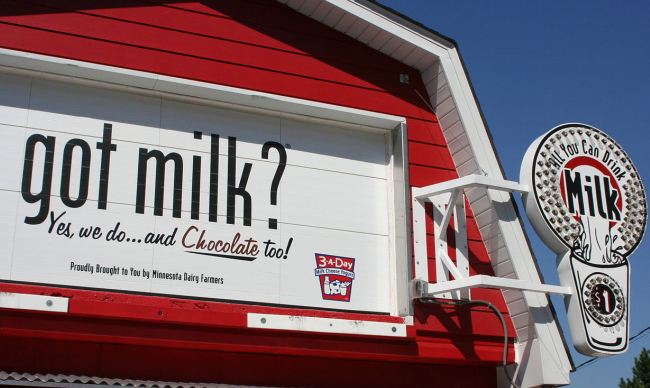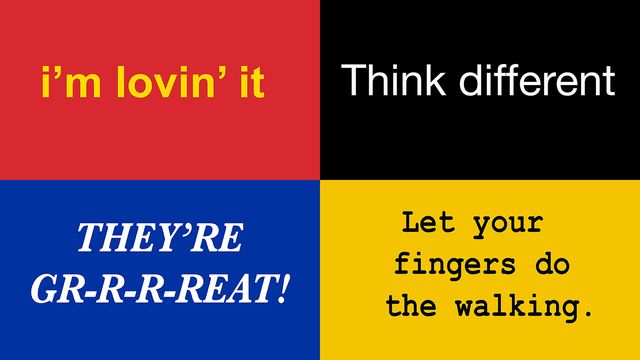How to get accurate translation of slogans and taglines?
September 20 , 2021How to get accurate translation of slogans and taglines?
by Target Language Translation Services
- September 20 2021

When companies are launched, they usually do so locally. That means they can suit all of their branding, styling and advertisement to their local markets. When it is time to go beyond their borders, though, there are some challenges for the companies to adapt its brand message to the language, culture and lifestyle of the new market they are entering. Company slogans or taglines seem to be particularly susceptible to hilarious results. Because they often involve a play on words or a reference to culture-specific concepts, corporate catchphrases become especially treacherous for translators. Certain nuances in language can be lost in literal translation, in which the end result could be misunderstood. Whilst a slightly imprecise translation tool may be a successful aide for the tourist abroad, it would not be appropriate for businesses to rely on such technology as part of their communications strategy. Companies should be aware that literal translation can lead in a whole host of confusion.
Why are slogans so vital?
As a start-up, companies will seek any and all ways by which they can get out into the target market much faster. One of the methods to do this is by thinking out a catchy slogan that just sticks.
More often than not, slogans are not just some words strung together. They have been carefully selected in such a way that they are short, sweet, and have a ring to them. That way, they stick in the minds of clients.
Some tips for rendering accurate slogan or tagline translations while retaining the style and character of the original
Mind the slang
It’s unlikely that the VP of Marketing at a major corporation stays current on French swear words, Mexican innuendoes, or Mandarin colloquialisms. And yet, many brands have released products that don’t quite express what they mean in the target language.
For example, when Ford’s slogan “Ford Pinto” entered the Brazilian market, it was met with uproarious laughter. It turns out that the car model shares its name with the Brazilian Portuguese slang term for “tiny male genitals”. Ford spun 180 degrees from the less-than-inspiring name, replacing it with “Corcel”, meaning “horse”.
Take notice of market differences
It’s a vital distinction to make that a literal, word for word translation may be understandable, but “tweaking” may be required to focus on a specific demographic or emotional effect.
For example, while “Ich liebe es,” or “I love it,” is perfectly acceptable and understandable in English, for the purposes of advertising, especially in America, where marketing tends to be less straightforward and rely on flamboyancy, a literal translation would be insufficient. “I’m lovin’ it,” became the English version of the original German slogan, and was made deliberately less formal and more suited to the casual, middle class audience of American clients that regard the less formal use of language as more approachable.
Pay attention to phonetics
For translation experts who spend hours poring over written texts, it’s sometimes easy to forget that the verbal component of language plays a large role in how we absorb information. That’s why it’s important to make sure that harmless sounds in the source language do not carry unintended meanings in the target language.
For instance, Coca-Cola Corporation’s slogan “Coca-Cola” is translated into “Ke-Kou-Ke-La”, which is how the company chose to represent itself phonetically on the Chinese market. In fact, what seemed like a decent transliteration was an absurd string of words, each with individual meanings. With just a little bit of adjustment, Coca-Cola was able to find the close equivalent of “Ko-Kou-Ko-Le”, which has the more appropriate sense of “happiness in the mouth.”
Consider language & cultural
Just take the example mentioned above, “I’m lovin’ it,” experienced yet another change when it was brought over to French, with the phrase translating to “C’est tout ce que j’aime,” which, literally translated into English, means “All that I love.” The literal translation of the German and English would have been “J’adore ca,” but this was not deemed suitable, even though it was grammatically precise, because the word for word translation didn’t express the same level of enthusiasm the company wanted. “J’aime,” though not as grammatically precise, presented a higher level of enthusiasm and excitement, and a longer sentence played out better in the advertising for French clients.
Recognize the underlying premise
The primary rule of translation has always been “you can’t translate what you don’t understand”, especially in the world of short, pithy sayings that are aimed to pack a big punch. To avoid awkward consequences down the road, make sure to grasp the aim, angle, and approach of the original slogan.
For example, Coors Light’s slogan “Turn it loose!” is translated into “You will get diarrhea!”. Many things can get “turned loose”, not all of which are desirable. Instead of honing in on the idea of unwinding and having fun, the marketing team responsible for this ad translated words rather than meaning lead in a surefire recipe for amusing inaccuracies.
Forget about literal translation
While this bit of advice is utilized to most texts, avoiding the word-for-word approach is critical when translating any sort of slogan or motto.
For example, when American Dairy Association’s slogan “Got Milk?” was literally translated into Spanish as “Are you lactating?”, this well-meaning and wildly popular phrase implies readiness to breast-feed rather than eagerness to drink dairy when asked in Spanish. Then a new campaign was quickly launched, this time with the catchphrase “Familia, Amor y Leche”, which means “Family, Love and Milk”. Not surprisingly, clients responded more favorably to the call for domestic bliss than to impertinent inquiry.

So in many ways, taking a short, simple phrase in one language can be challenging to precisely preserve in others.
Just like companies have done in the local market, proper branding is what will get the business a foot in the door with potential clients in new market. Therefore, never shy away from translating slogans, taglines and other brand message – while making sure that they retain their core message, that is.
The ideal thing for companies to do is to look for a translation agency that has a good grasp of the languages they are dealing with. The translation agency should have a broad knowledge of the sayings, idioms and adages in both languages too – helping to inform them of the best translation practices.
Only then can companies seamlessly move businesses from one culture to the other without missing a beat in the process.
This article is reprinted from QuickSliver Translate, ALTA, and ITC TRANSLATIONS.
If there is a copyright, please inform us in time, we will delete it right the first time.